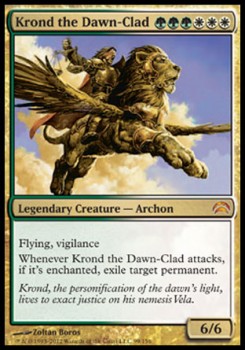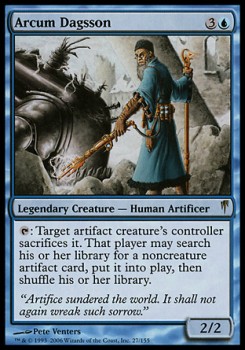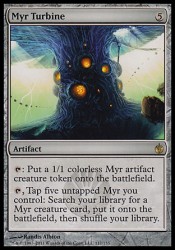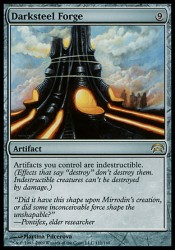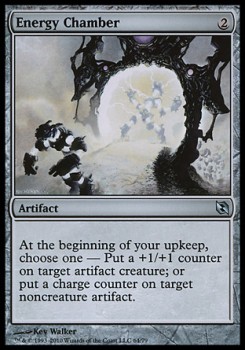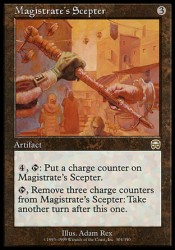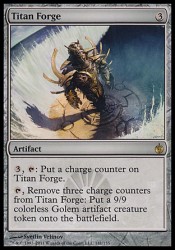Remember those commander MTG decks I made before my last Australia trip? If not, they are described here. Note the last comment, where I describe how I replaced the monogreen deck with a Green/Black tokens deck. In Australia the six decks were played in 3 or 4 player games an average of 10 times each. The results (wins-losses) were as follows:
– Darien, King of Kjeldor (W soldiers): 6-3
– Mayael The Anima (RGW fatties): 6-5
– Skullbriar, The Walking Grave (GB tokens): 6-5
– Olivia Voldaren (RB vampires): 5-4
– Grand Arbiter Augustine IV (UW control): 4-5
– Wrexial, The Risen Deep (UB mill): 2-7
Yep, Wrexial bombed hard! The other decks, as you can see, were very closely matched. I believe Grand Arbiter was a bit stronger than it’s wins suggest, but tended to be a bigger target in the multiplayer games so ended up losing more than it won.
I have another trip coming up in about a month, and the decks are coming with me! I’ve made slight adjustments to five of them to include cards released since last December, and I scrapped Wrexial entirely in favour of a brand new deck. This was done not because it was the weakest, but because in 2-player games (which I will be playing in NM and CA) I reckon it would just be tedious to play against.
So the question arose, what would the new deck be?
The above card is from one of the recently released new Planechase 2012 decks. His particular deck is the strongest of the four (at least in my playtesting), and focuses on enchantments. I greatly enjoyed the deck, since I like enchantment cards and they are often underutilized. My first idea for a new deck would use this guy as commander, and include all and every enchantment boosting card I could find in white and green. It would have been a slightly defensive deck, heavy on lifegain, that relied on building up 2 or 3 creatures to shockingly powerful levels before finishing the game in as few attacks (ideally, only one!) as possible. I still think it’s a good idea, and that it may have been well balanced against the other five decks, but after some brainstorming realized I couldn’t actually build the deck without heavily changing some of the other five (specifically the Skullbriar and Augustine IV decks). So I scrapped this idea, or rather put it on the back burner for a while.
So… what next?
I wanted something I could build without cannibalizing the other decks. Furthermore, I wanted something quite different from them as well. With Wrexial gone I was left with only one blue deck, so ideally the new deck would use blue, and hopefully avoid the other colours since each were represented twice in other decks. Also – and this was a big one – I wanted to feature artifacts since they hadn’t been a large component of any of the other five decks.
A few minutes of research led to me finding this guy, and as soon as I saw him I knew I had my new commander:
He’s one of those cards that you occasionally find with an ability that just seems too good to be true. There are any number of game-winning artifact cards that could be pulled from the deck right into play, and all I needed to do this was an artifact creature already in play. Here’s an obvious combo:
Use the turbine to create Myr tokens, which can then be sacrificed using Arcum to put things like the Forge into play. This could happen very quickly given a perfect hand. For instance:
Turn 1: Seat Of The Synod, Sol Ring, Mox Opal, Palladium Myr
Turn 2: Arcum
Turn 3: Myr Turbine, sac token to put Forge into play
And that scenario even has some flexibility!
But a commander deck contains 100 cards, and this combo requires some sort of artifact creature or token generator to start. Happily, being blue there are any number of ways (Treasure Mage, Fabricate) to get specific cards into your hand (the deck contains other token generators aside from the Turbine) or to speed up card draw entirely. So what about the rest of the deck? What is the ‘gimmick’ to the remainder of the cards?
Here’s a hint:
Yep, it’s a ‘charge counter’ deck! Over the years I had coincidentally amassed almost every good charge counter card in existence, and it was finally time to collect them all into a deck. So about 20% of the entire deck is cards that utilize or manipulate charge counters, often to hilarious results:
So the deck is a control-based artifact deck (about 90% of the non land cards are artifacts) that utilize Arcum Dagsson’s ability to ‘tutor’ up broken cards to make the player invulnerable while he bases a win around fun-to-play charge counter cards. I’ve done some test deals to make sure it seems to work in principle, but it should be fun to see how it actually works against another one of the (mostly successful) other five decks 🙂
